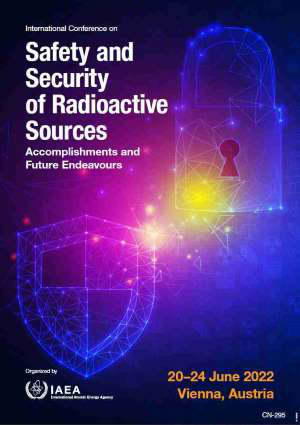Speakers
Description
Radioactive sources as source of energy have inevitable uses in medical, agriculture, industry, research etc. However, radioactive sources are potential health hazard to human if control measures are not put in place. To avoid the health hazards, it is important to ensure that safety and security of radioactive sources are maintained throughout the life cycle. Ensuring safety and security of radioactive sources requires a state commitment i.e regulatory infrastructure, manpower and technical capability, resources, stakeholder’s involvement and regional cooperation. Challenges are expected on maintaining the safety and security of radioactive sources in the life cycle. The first challenge is lack of management policy for radioactive materials; management and control of radioactive sources starts from the moment a source is produced until its disposal. This means a state should have a policy in place to address on how a source will be managed from importation, before use a licensee has to state clearly how to handle disused sources whether to return them to supplier or send them to a disposal site. The return to supplier is a good option to avoid accumulation of sources in the country in the absence of disposal option. The only problem is to control sources during transportation. The second challenge is lack of regulatory framework. Laws and regulations are very important in ensuring safety and security of radiation sources. Absence of laws and regulatory body to address and enforce safety and security of radioactive sources hinders an effective control of sources. The third challenge is illicit trafficking. This is contributed much by absence of control mechanism at entry or exit points. The fourth challenge is porous borders. In practice, countries with large extended borders have many borders which are not controlled and this makes it difficult to manage movement of radiation sources even in the presence of the regulatory infrastructure. Therefore the presence of porous borders contributes to the problem of illicit trafficking. The fifth challenge is the presence of unregistered sources. Legacy sources whish were imported in a country before a formal registration put the safety and security of those radiation sources at a risk because they are not easily controlled. The sixth challenge is lack of disposal option. Accumulation of sources in the country even with good storage infrastructure is a big problem because it will reach a time when the storage facilities may not be able to accommodate all disused sources that would be generated. Moreover, accumulations of disused sources in a single facility increase a security risk as target for terrorists and cost for maintaining of facility. Other challenges include the problem of increased exposure dose in vicinity of the facility. Therefore, in order to address the aforesaid challenges a joint effort by the international community is required.
| Country OR Intl. Organization | Tanzania |
|---|

